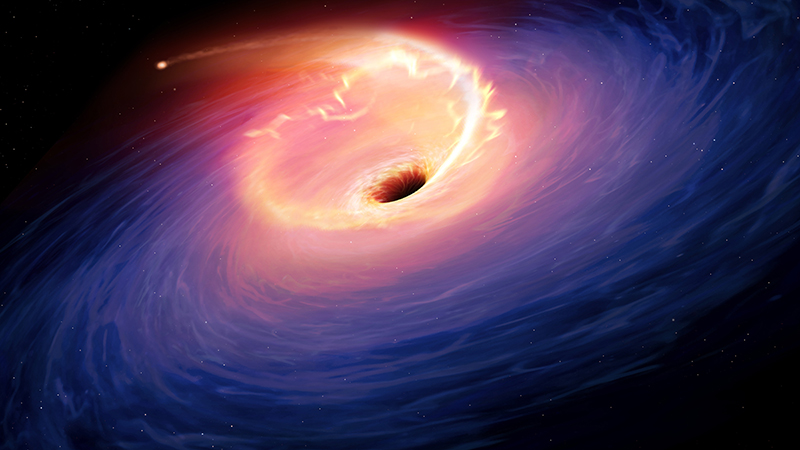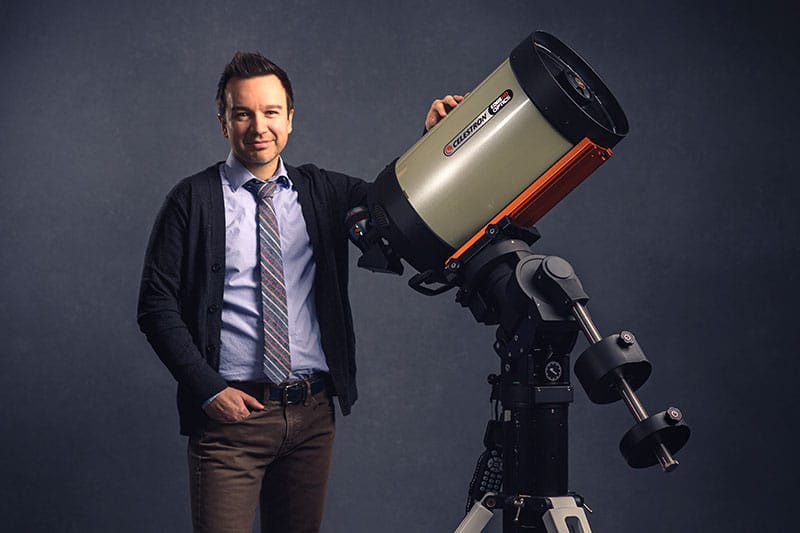Astronomers have discovered an incredibly bright and long-lasting cosmic event, believed to be a supermassive black hole tearing apart a star. This captivating discovery, dubbed “Scary Barbie,” was hiding in plain sight in telescope data for years. Before we delve into the details, let’s learn about black holes and some of the most famous ones known to astronomers.
What is a Black Hole?
A black hole is a region in space with an extremely high gravitational pull, so strong that not even light can escape it. These mysterious objects form when a massive star collapses in on itself after exhausting its nuclear fuel. Some well-known black holes include Sagittarius A* at the center of our Milky Way galaxy, Cygnus X-1, and V404 Cygni.
The Discovery of Scary Barbie
Astronomers found an extremely bright and long-lasting cosmic event named ZTF20abrbeie, or “Scary Barbie.” This event was hiding within a massive amount of telescope data, undetected for years. Scary Barbie is a transient object, meaning it appears, disappears, or changes dramatically over short periods. This particular transient is believed to be a black hole in the process of consuming a star.
Danny Milisavljevic, an assistant professor of physics and astronomy at Purdue University, said, “It’s absurd. If you take a typical supernova and multiply it a thousand times, we’re still not at how bright this is – and supernovas are among the most luminous objects in the sky.”

Scary Barbie remained undetected for so long because it is located far away in a relatively unexplored region of the sky. It was eventually discovered using an AI engine called the Recommender Engine For Intelligent Transient Tracking (REFITT), which scans through millions of observations from telescopes around the world to find interesting objects for further study.
Milisavljevic explained, “This is so different from anything else we’ve ever seen that we hadn’t even gotten around to trying to classify it. It’s been hanging out in the public data for years.”
Scary Barbie’s Mystique
Scary Barbie is an anomaly. It is not only orders of magnitude brighter and more energetic than any other transient recorded before, but it also lasts much longer. Most transients last weeks or months, but this one has lasted for over 800 days – more than two years – and the latest data show that it may be visible for years to come.
Bhagya Subrayan, a graduate student involved in the research, said, “We think a very supermassive black hole pulled in a star and ripped it apart. The forces around a black hole, called tidal disruption, pull other objects apart in a process called ‘spaghettification.’ We think that’s what happened, but on extreme time scales: The most massive of black holes ripping apart a massive star. The duration is unlike anything we’ve ever seen before, and it produced the most luminous transient in the universe.”
The actual event – the spaghettification of the massive star – may be much shorter in duration. However, because the transient is so far away, the law of relativity slows down the light as it travels to human eyes, making the event appear to last nearly twice as long.
Explaining Complex Concepts
- Supermassive black hole: A supermassive black hole is a black hole that has a mass millions or billions of times greater than that of our Sun. These enormous black holes are typically found at the centers of galaxies, including our own Milky Way.
- Transient objects: Transients are astronomical objects or phenomena that appear, disappear, or change in a dramatic way over short time scales, such as hours or days, rather than centuries or millennia.
- Tidal disruption: Tidal disruption refers to the process where the immense gravitational forces near a black hole tear apart nearby objects, such as stars.
- Spaghettification: This term describes the stretching and elongation of an object due to extreme gravitational forces, such as those experienced near a black hole. In this case, the massive star being ripped apart by the black hole was “spaghettified.”
Significance of the Discovery
Discoveries like Scary Barbie remind us that there are still mysteries and wonders in the universe waiting to be uncovered. As Milisavljevic put it, “Discoveries like this really open our eyes to the fact that we are still uncovering mysteries and exploring wonders in the universe – things no one has ever seen before.”
Scary Barbie also highlights the importance of continuing to explore the universe and study the vast amount of data collected by telescopes. As scientists further develop AI tools like REFITT, more hidden gems in the data may come to light, leading to a greater understanding of the cosmos and its many wonders.
The research behind Scary Barbie was funded part by the National Science Foundation and published in The Astrophysical Journal. Some of the information in this article was provided in a release by Purdue University.












